Blog
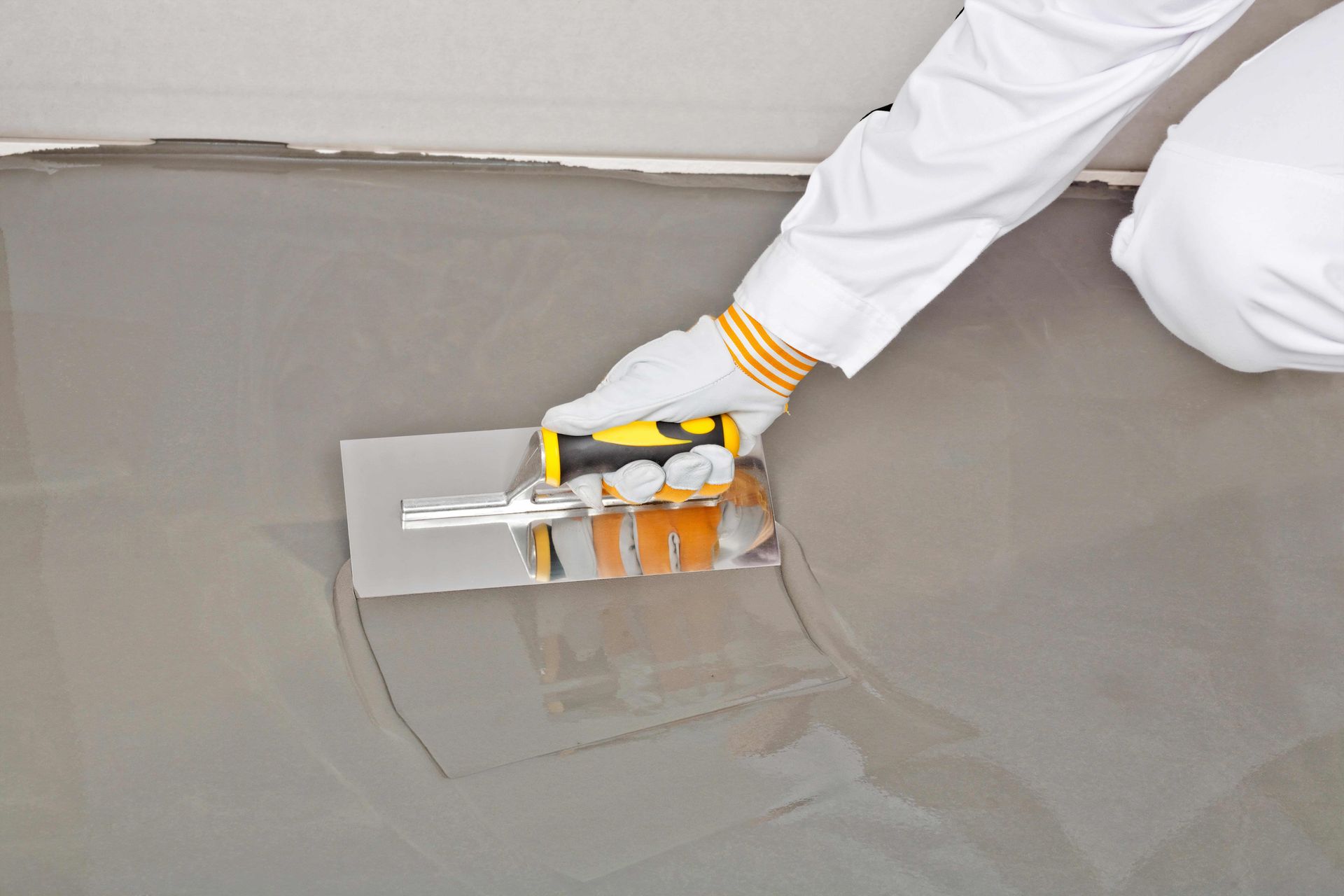
Choosing the right floor coating for your patio is essential to ensure it not only looks great but also withstands the elements and foot traffic. With so many options available, finding the perfect coating can feel overwhelming. In this step-by-step guide, we'll walk you through the process of selecting the ideal floor coating for your patio. Step 1: Assess Your Needs The first step in choosing the right floor coating for your patio is to assess your specific needs and preferences. Consider factors such as the size and layout of your patio, the climate in your area, and how you plan to use the space. Are you looking for a coating that provides slip resistance for safety? Do you want a decorative finish to enhance the aesthetic appeal of your patio? Understanding your requirements will help narrow down your options. Step 2: Research Different Coating Options Once you've identified your needs, it's time to research different types of floor coatings available for patios. Common options include: Epoxy Coatings: Known for their durability and versatility, epoxy coatings create a seamless, high-gloss surface that resists stains, chemicals, and abrasions. They come in a variety of colors and can be customized with decorative flakes or metallic pigments. Polyurethane Coatings: Polyurethane coatings offer excellent UV resistance and are ideal for outdoor applications. They provide a durable, glossy finish that is easy to clean and maintain. Concrete Stains: Concrete stains penetrate the surface of the concrete, creating a permanent color that enhances the natural beauty of the material. Stains are available in a range of colors and can be combined to create custom effects. Step 3: Consider Durability and Maintenance When choosing a floor coating for your patio, consider factors such as durability and maintenance requirements. Will the coating be exposed to harsh weather conditions, such as rain, snow, or direct sunlight? If so, you'll want a coating that is UV resistant and able to withstand temperature fluctuations without cracking or peeling. Additionally, consider how much maintenance you're willing to undertake. Some coatings may require periodic resealing or touch-ups to maintain their appearance. Step 4: Think About Aesthetics The aesthetics of your patio are important, so choose a floor coating that complements the overall design of your outdoor space. Consider factors such as color, texture, and finish. Do you want a smooth, glossy surface, or are you drawn to the rustic look of a textured coating? Take into account the architectural style of your home and the landscaping elements in your yard when making your decision. Step 5: Get Professional Advice If you're unsure which floor coating is best for your patio, don't hesitate to seek professional advice. A reputable flooring contractor or supplier can assess your needs, recommend suitable coatings, and provide guidance on installation and maintenance. They can also offer samples or mock-ups to help you visualize how different coatings will look in your space. Choosing the right floor coating for your patio is a decision that requires careful consideration of your needs, preferences, and budget. By following this step-by-step guide and consulting with professionals as needed, you can select a coating that enhances the beauty and functionality of your outdoor space, allowing you to enjoy your patio for years to come.
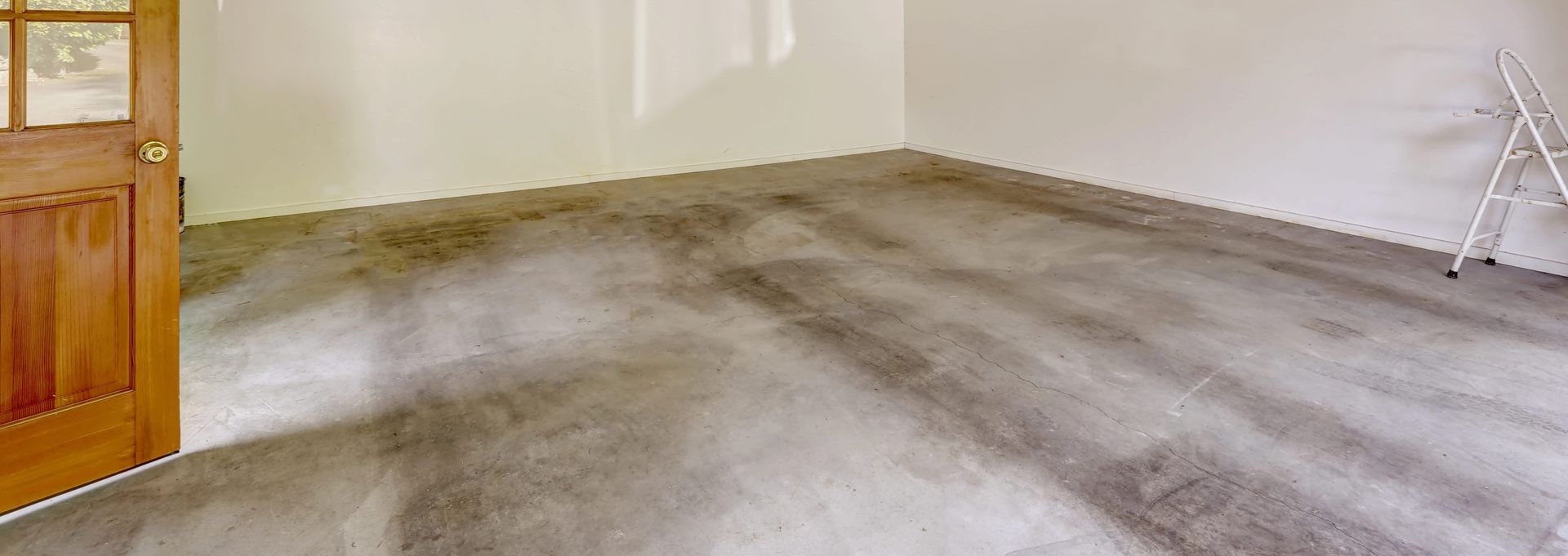
However, they are also susceptible to moisture, mold, and structural issues, especially in areas with high groundwater levels or frequent flooding. Coating basement floors is a proactive measure that offers numerous benefits, enhancing both the aesthetics and functionality of this often-underutilized space. In this article, we'll explore the top five benefits of coating your basement floors. Moisture Protection: Basements are notorious for moisture infiltration, which can lead to mold growth, musty odors, and damage to furniture and belongings. Floor coatings act as a barrier against moisture, preventing water vapor from seeping through the concrete substrate. By sealing the floor, coatings help maintain a dry and healthy environment in the basement, reducing the risk of water-related issues and preserving the integrity of the building's structure. Enhanced Durability: Concrete basement floors are prone to wear and tear from foot traffic, heavy loads, and spills. Coating the floors with a durable epoxy or polyurethane coating adds an extra layer of protection, increasing their resistance to scratches, stains, and abrasions. This enhances the longevity of the floors, reducing the need for frequent repairs or replacements and saving homeowners time and money in the long run. Improved Aesthetics: Unfinished basement floors can be unsightly, with stains, cracks, and uneven surfaces detracting from the overall appeal of the space. Floor coatings offer a simple yet effective solution for transforming dull basement floors into sleek, attractive surfaces. With a wide range of colors, finishes, and decorative options available, homeowners can customize their basement floors to suit their style preferences and create a more inviting atmosphere. Easy Maintenance: Maintaining bare concrete floors in the basement can be challenging, as they are prone to collecting dust, dirt, and moisture. Coated floors, on the other hand, are much easier to clean and maintain. The smooth, non-porous surface of the coating resists dirt and stains, allowing for quick and effortless cleanup with a mop or mild detergent. This makes it easier for homeowners to keep their basements clean and tidy, enhancing the overall usability of the space. Increased Resale Value: A finished basement can significantly increase the resale value of a home, making it a more attractive prospect for potential buyers. Coating the basement floors adds to the overall appeal of the space, giving it a polished, well-maintained look that can set it apart from competing properties on the market. Additionally, the added durability and moisture protection provided by floor coatings can give buyers peace of mind knowing that they are investing in a basement that is built to last. Coating basement floors offers a range of benefits, from moisture protection and enhanced durability to improved aesthetics and increased resale value. Whether you're looking to create a more functional living space or add value to your home, investing in a high-quality floor coating can make a significant difference. By protecting your basement floors from moisture damage, improving their appearance, and simplifying maintenance, coatings can help you make the most of this valuable area of your home for years to come.

Whether it's a residential garage or an industrial workshop, the right floor coating can make a world of difference in terms of aesthetics, durability, and functionality. In this comprehensive guide, we'll delve into everything you need to know about garage floor coatings – from types and benefits to installation and maintenance tips. Types of Garage Floor Coatings: Epoxy Coatings: Epoxy is one of the most popular choices for garage floors due to its durability and versatility. It forms a strong bond with concrete, creating a seamless, high-gloss surface that is resistant to stains, chemicals, and abrasions. Epoxy coatings come in a variety of colors and can be customized with decorative flakes or metallic pigments for added visual appeal. Polyurethane Coatings: Polyurethane coatings offer excellent chemical and UV resistance, making them ideal for garage floors exposed to harsh environmental conditions. They provide a durable, glossy finish that is easy to clean and maintain. Polyurethane coatings are also flexible, which helps prevent cracking and peeling caused by temperature fluctuations or substrate movement. Polyaspartic Coatings: Polyaspartic coatings are a type of fast-curing polyurea that offers rapid installation and quick return-to-service times. This makes them a popular choice for busy garages or commercial spaces where downtime is limited. Polyaspartic coatings provide similar benefits to polyurethane, including high durability, chemical resistance, and UV stability. Benefits of Garage Floor Coatings: Enhanced Durability: Garage floor coatings form a protective barrier that seals and strengthens the concrete substrate, preventing damage from impacts, abrasions, and chemical spills. This extends the lifespan of the floor and reduces the need for costly repairs or replacements. Improved Aesthetics: A coated garage floor adds a touch of sophistication to any space. With a wide range of colors, finishes, and decorative options available, homeowners and businesses can customize their garage floors to suit their style preferences and enhance curb appeal. Easy Maintenance: Unlike bare concrete floors, coated garage floors are easy to clean and maintain. They resist stains, oil drips, and other common garage spills, allowing for quick and effortless cleanup with soap and water or a mild detergent. Safety: Garage floor coatings can improve safety by providing slip-resistant surfaces that reduce the risk of accidents and injuries, especially in high-traffic areas or environments exposed to water or oil. Installation and Maintenance Tips: Surface Preparation: Proper surface preparation is essential for the success of a garage floor coating. This typically involves cleaning the floor thoroughly to remove dirt, oil, and grease, followed by etching or grinding to create a rough texture for better adhesion. Application: Follow the manufacturer's instructions carefully when applying the coating. Use a roller or squeegee to spread the coating evenly across the floor, working in small sections to ensure uniform coverage. Allow the coating to cure according to the recommended timeframe before allowing foot or vehicle traffic. Maintenance: To maintain the appearance and performance of your garage floor coating, regularly sweep or vacuum to remove dirt and debris. For deeper cleaning, use a mild detergent and water or a specialized garage floor cleaner. Avoid using harsh chemicals or abrasive cleaners, as they can damage the coating. Garage floor coatings offer a host of benefits, from enhanced durability and aesthetics to improved safety and easy maintenance. Whether you're a homeowner looking to upgrade your garage or a business owner seeking to protect your commercial space, investing in a high-quality floor coating can yield long-lasting results. By understanding the different types of coatings available, their benefits, and proper installation and maintenance techniques, you can transform your garage floor into a functional and visually appealing asset that stands the test of time.
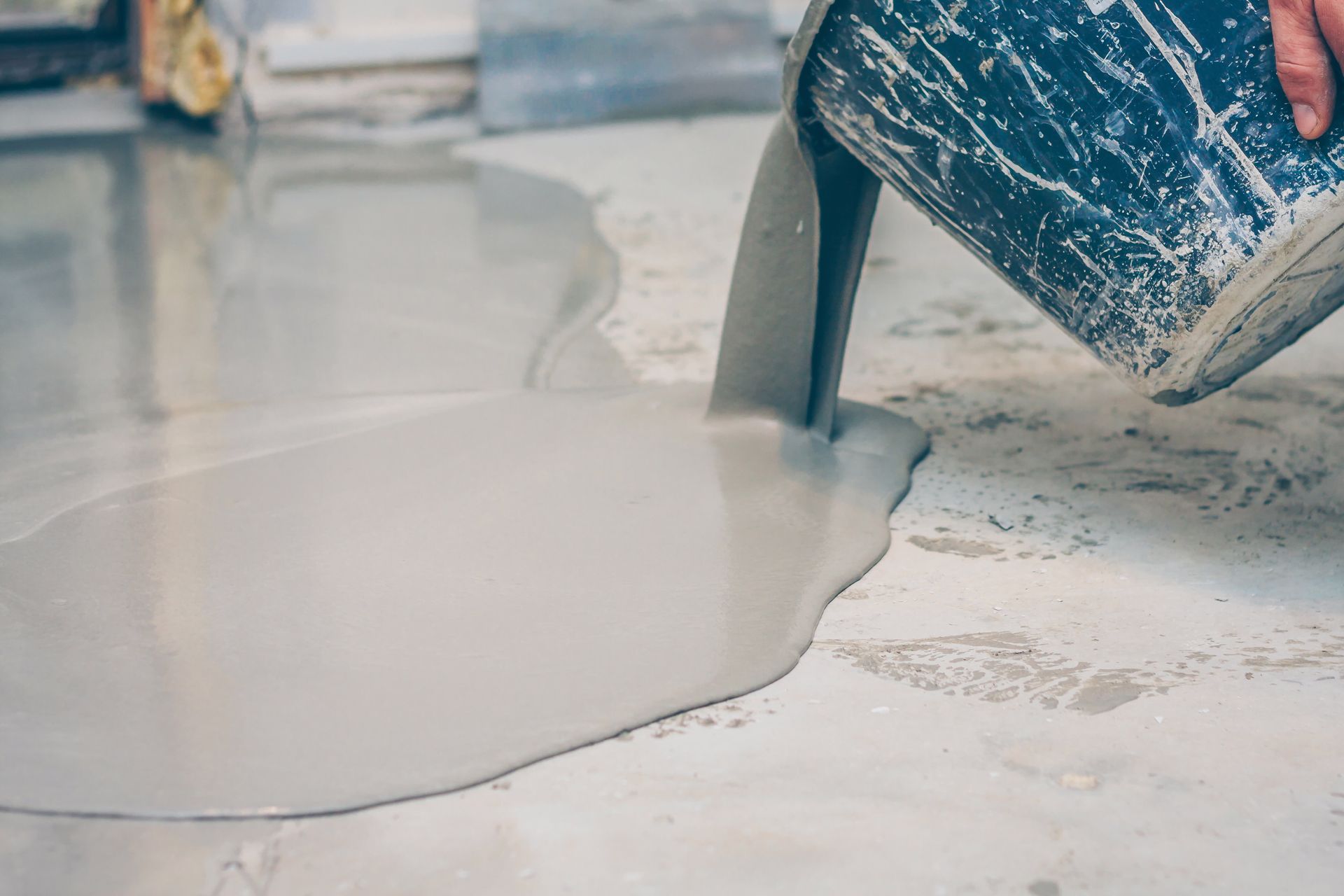
Yet, amidst the hustle and bustle of everyday operations, floors often bear the brunt of neglect. However, with the evolution of floor coatings, the narrative is changing. These coatings are not just functional but transformative, turning mundane floors into eye-catching features. In this blog post, we'll explore how floor coatings can revamp commercial spaces, adding a touch of sophistication and durability. Enhanced Aesthetics: Picture this: a dull, grey concrete floor in a warehouse or showroom. Now envision the same space with a glossy, vibrant floor coating. The difference is striking. Floor coatings come in a myriad of colors, patterns, and finishes, allowing businesses to customize their spaces to reflect their brand identity. Whether it's a sleek metallic sheen or a rustic, earthy texture, the options are endless. By upgrading the aesthetics of their floors, businesses can create a more inviting ambiance for customers and employees alike. Durability and Longevity: Beyond aesthetics, floor coatings offer practical benefits that can significantly impact the bottom line. Traditional concrete floors are prone to wear and tear from heavy foot traffic, machinery, and spills. Floor coatings, however, provide a protective barrier that enhances durability and extends the lifespan of the floor. This not only reduces maintenance costs but also minimizes downtime for repairs, allowing businesses to focus on what matters most – their operations. Safety and Hygiene: In commercial settings, safety and hygiene are paramount. Slippery floors can pose a hazard to employees and customers, while porous surfaces can harbor bacteria and contaminants. Floor coatings address these concerns by offering slip-resistant properties and a seamless, non-porous finish that is easy to clean and maintain. With options for antimicrobial additives, floor coatings contribute to a healthier environment, particularly in industries where cleanliness is crucial, such as food and healthcare. Versatility and Adaptability: One of the standout features of floor coatings is their versatility. Whether it's a retail space, restaurant, or industrial facility, floor coatings can be tailored to suit the specific needs of any business. From chemical resistance to UV stability, coatings can be customized to withstand the unique challenges of different environments. Moreover, advancements in technology have led to rapid curing formulations, allowing for minimal disruption during installation – a game-changer for businesses with tight timelines. Environmental Sustainability: In an era of heightened environmental awareness, businesses are increasingly seeking sustainable solutions. Floor coatings offer a greener alternative to traditional flooring options. Many coatings are low in volatile organic compounds (VOCs), reducing harmful emissions that contribute to indoor air pollution. Additionally, the longevity of floor coatings means fewer resources are consumed over time compared to frequent replacements of conventional flooring materials. Cost-Effectiveness: While the initial investment in floor coatings may seem daunting, the long-term benefits far outweigh the costs. By protecting the underlying substrate from damage, floor coatings help businesses avoid expensive repairs and replacements down the line. Furthermore, the enhanced aesthetics of coated floors can attract more customers and improve brand perception, ultimately driving revenue growth. When viewed through the lens of ROI, floor coatings emerge as a smart investment for businesses looking to elevate their commercial spaces. In the realm of commercial spaces, first impressions matter. Floor coatings offer a simple yet effective way to transform drab, uninspiring floors into vibrant, functional assets. From enhancing aesthetics to improving durability and safety, the benefits are clear. As businesses strive to create memorable experiences for their customers, investing in floor coatings is a step towards achieving that goal. With the right coating solution, commercial spaces can truly go from drab to fab, leaving a lasting impression that sets them apart from the competition.
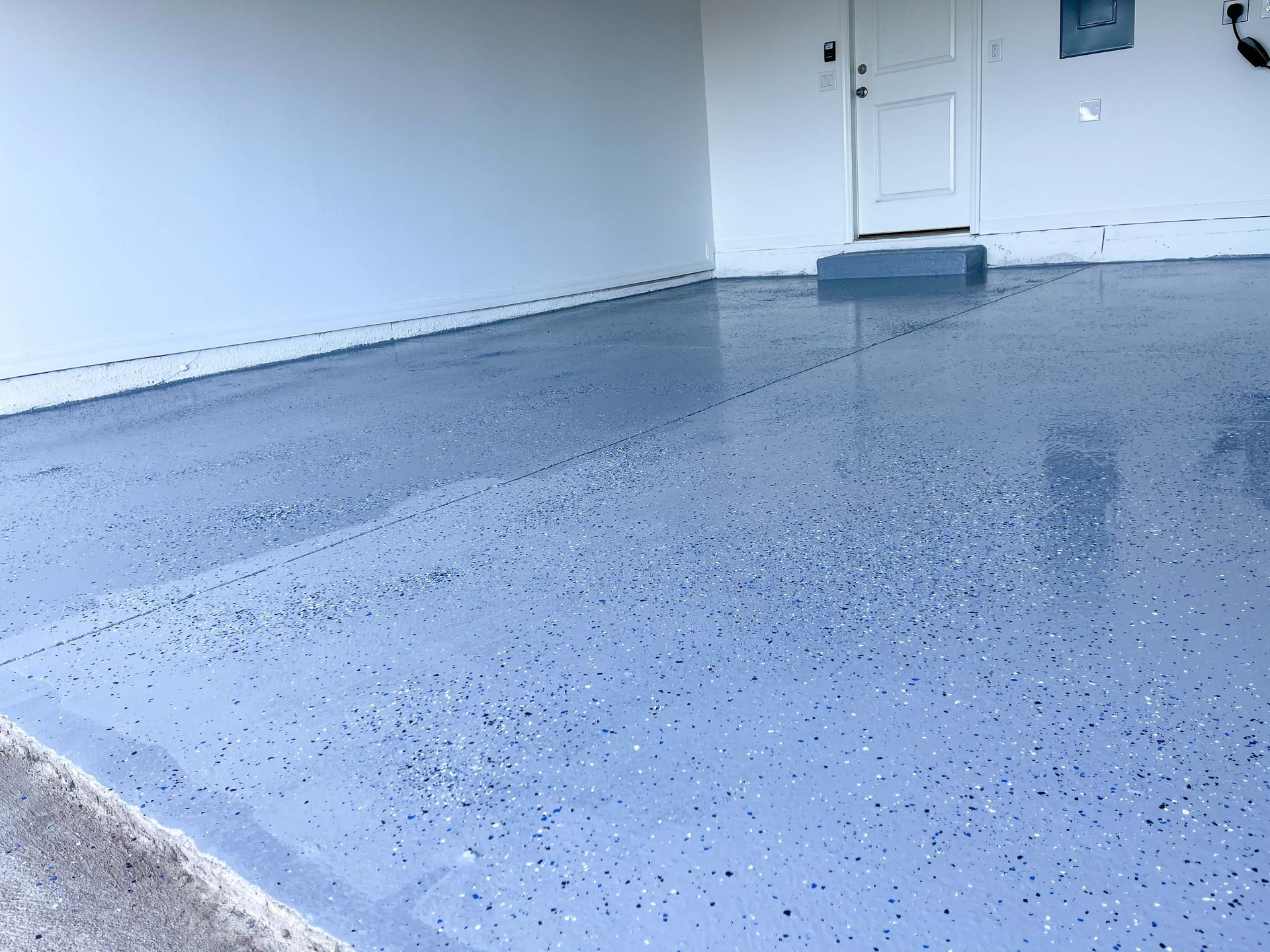
In the realm of garage floor coatings, metallic epoxy has emerged as a game-changer, offering homeowners a unique combination of beauty, durability, and versatility. With its stunning visual effects and customizable designs, metallic epoxy has become a popular choice for transforming ordinary garage floors into extraordinary spaces. Captivating Visual Effects: Metallic epoxy floor coatings are renowned for their mesmerizing visual effects, which mimic the look of natural stone, marble, or flowing rivers. By blending metallic pigments with epoxy resin, installers can create seamless, multidimensional patterns that add depth and intrigue to the garage floor. From vibrant swirls of color to subtle metallic sheens, the design possibilities with metallic epoxy are virtually limitless. Customization Options: One of the key attractions of metallic epoxy is its ability to be fully customized to suit the homeowner's preferences and style. Whether you prefer bold, eye-catching designs or understated elegance, metallic epoxy can be tailored to match your vision. Installers can experiment with different pigment combinations, application techniques, and finishing touches to create a truly unique garage floor that reflects your personality and taste. Enhanced Durability: Beyond its aesthetic appeal, metallic epoxy offers exceptional durability and performance. Once cured, metallic epoxy forms a seamless, high-gloss surface that resists stains, scratches, and abrasions. Its superior strength and resilience make it well-suited for garage environments where heavy foot traffic, vehicle traffic, and potential spills are commonplace. With proper maintenance, a metallic epoxy-coated garage floor can maintain its beauty and functionality for years to come. Application Techniques: Achieving the desired visual effects with metallic epoxy requires skillful application techniques and attention to detail. Installers employ various methods such as pouring, rolling, or spraying the epoxy mixture onto the prepared concrete substrate. They then use tools like squeegees, brushes, or trowels to manipulate the epoxy and create intricate patterns and textures. The application process requires precision and expertise to ensure consistent coverage and optimal results. Sealing and Protection: Once the metallic epoxy has been applied and allowed to cure, it's essential to protect the surface with a high-quality sealer. The sealer not only enhances the gloss and depth of the metallic finish but also provides an additional layer of protection against UV exposure, moisture, and chemical spills. Regular maintenance, including sweeping, mopping, and occasional resealing, can help prolong the life and beauty of the metallic epoxy coating. As homeowners increasingly seek to elevate the aesthetics and functionality of their garage spaces, metallic epoxy floor coatings have emerged as a popular choice for achieving stunning results. With its captivating visual effects, customization options, and durability, metallic epoxy offers endless possibilities for creating a truly unique garage floor. Whether you're drawn to bold, modern designs or classic, timeless elegance, Johns Creek Garage Floor can help bring your vision to life with expert installation and craftsmanship. Explore the latest trends and techniques in metallic epoxy floor coatings and transform your garage into a showcase-worthy space that wows every time you step inside.

That's where UV resistance comes into play. At Alpharetta Garage Floor, we understand the importance of UV resistance in preserving the beauty and longevity of your floor coatings. Join us as we explore the crucial role of UV resistance in ensuring your floor coatings stand the test of time. Understanding UV Damage: Ultraviolet (UV) radiation from the sun can wreak havoc on unprotected surfaces, including floor coatings. UV exposure can cause colors to fade, coatings to degrade, and surfaces to become brittle over time. This degradation not only compromises the aesthetic appeal of the coating but also reduces its performance and lifespan. The Importance of UV Resistance: UV resistance is a key factor in selecting floor coatings, especially for outdoor or sun-exposed areas. Here's why it matters: Preservation of Color and Appearance - UV-resistant coatings are formulated to withstand prolonged exposure to sunlight without fading or discoloration. This helps maintain the original color and appearance of the coating, keeping your floors looking vibrant and attractive for years to come. Protection Against Degradation - UV-resistant coatings provide a protective barrier against UV radiation, preventing premature degradation and deterioration of the coating material. By shielding the underlying substrate from UV damage, UV-resistant coatings help extend the life of your floors and minimize the need for costly repairs or recoating. Enhanced Durability and Performance - UV resistance goes hand in hand with overall durability and performance. Coatings that are resistant to UV damage are typically more robust and long-lasting, providing superior protection against wear, abrasion, and chemical exposure in addition to UV radiation. Versatility for Outdoor Applications - UV-resistant coatings are ideal for outdoor applications where exposure to sunlight is unavoidable. Whether you're coating a patio, driveway, or outdoor living space, UV-resistant coatings offer peace of mind knowing that your floors are protected against the elements. Choosing UV-Resistant Coatings: When selecting floor coatings, be sure to consider the level of UV resistance offered by the product. Look for coatings specifically formulated with UV inhibitors or additives that provide enhanced protection against UV damage. Additionally, consult with your coating supplier or contractor to ensure that the chosen product is suitable for your specific application and environmental conditions. Maintaining UV-Resistant Coatings: While UV-resistant coatings offer superior protection against UV damage, proper maintenance is still essential to maximize their lifespan. Here are some tips for maintaining UV-resistant coatings: Regular Cleaning - Keep your floors clean and free of debris to prevent dirt and grime from accumulating on the surface. Regular sweeping and occasional mopping with a mild detergent will help maintain the coating's appearance and performance. Avoid Harsh Chemicals - Avoid using harsh chemicals or abrasive cleaners that can damage the coating and compromise its UV resistance. Instead, use gentle cleaning solutions and non-abrasive cleaning tools to protect the integrity of the coating. Periodic Inspection - Periodically inspect your UV-resistant coatings for signs of wear, damage, or discoloration. Address any issues promptly to prevent further deterioration and maintain the protective properties of the coating. UV resistance is a critical consideration in selecting floor coatings for outdoor or sun-exposed areas. By choosing UV-resistant coatings, you can protect your floors from the damaging effects of UV radiation, preserve their color and appearance, and extend their lifespan.
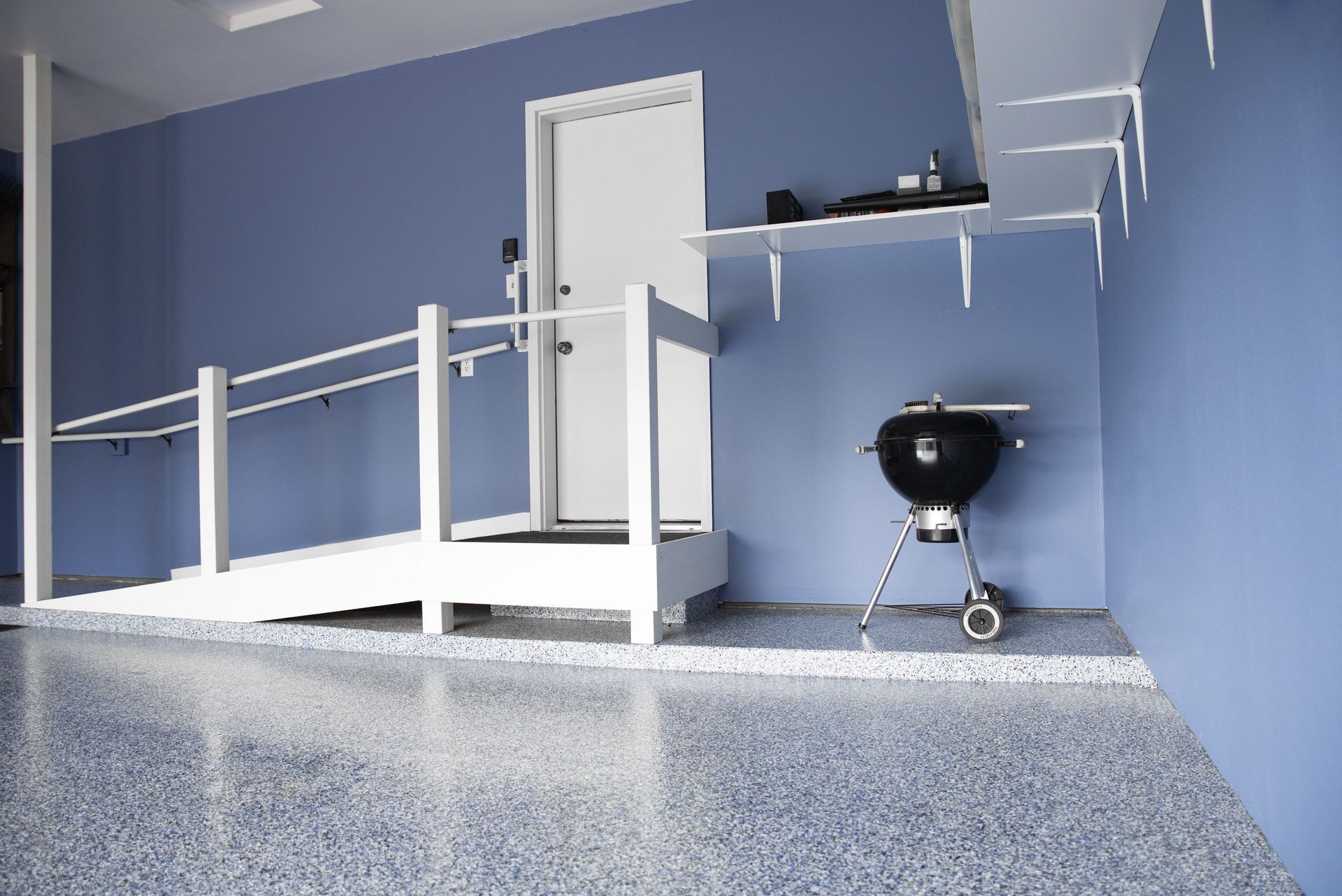
If so, you're not alone. Over time, concrete floors can lose their luster due to heavy foot traffic, exposure to the elements, or simply the passage of time. But before you consider costly replacements or extensive renovations, there's a simpler solution that can breathe new life into your old concrete floors: professional revitalization. At Johns Creek Garage Floor, we specialize in transforming old, worn-out concrete floors into stunning, durable surfaces that enhance the beauty and functionality of any space. In this blog post, we'll explore the transformative power of concrete floor revitalization through captivating before and after transformations. Before: Dull and Cracked Surfaces Many old concrete floors suffer from a lack of vibrancy, with dull surfaces that fail to make a statement. Additionally, years of use can lead to cracks, chips, and other signs of wear and tear, detracting from the overall appearance of the space. In these "before" scenarios, homeowners may feel resigned to living with unsightly floors or resorting to costly replacements. After: Sleek and Stylish Revitalization Thanks to the magic of concrete floor revitalization, the same dull and cracked surfaces can be transformed into sleek, stylish floors that rival even the most luxurious materials. Our team at Johns Creek Garage Floor utilizes advanced techniques and high-quality materials to revitalize old concrete, restoring its beauty and durability. From filling cracks and repairing damage to applying a fresh coat of premium sealant, the "after" results speak for themselves. Before: Stained and Unsightly Floors Stubborn stains, whether from spills, leaks, or years of neglect, can mar the appearance of concrete floors, making them appear dirty and unkempt. Despite regular cleaning efforts, these stains may prove resistant to conventional cleaning methods, leaving homeowners frustrated and dissatisfied with the overall look of their floors. After: Clean and Resilient Surfaces With our professional revitalization services, even the most stubborn stains can be banished, leaving behind clean, resilient surfaces that are both beautiful and practical. By thoroughly cleaning and treating the concrete, we're able to eliminate stains and restore the floor's natural shine, creating a welcoming environment that homeowners can be proud of. Before: Faded and Discolored Concrete Exposure to sunlight, moisture, and other environmental factors can cause concrete floors to become faded and discolored over time. This loss of color can leave floors looking dull and unappealing, detracting from the overall aesthetic of the space and creating a sense of dissatisfaction among homeowners. After: Vibrant and Refreshed Finishes Through our revitalization process, faded and discolored concrete floors can be brought back to life with vibrant, refreshed finishes that brighten up the entire space. Whether through staining, polishing, or other techniques, we're able to enhance the natural beauty of the concrete, leaving homeowners thrilled with the results. In conclusion, if you're tired of living with old, worn-out concrete floors, it's time to consider the transformative power of professional revitalization. With Johns Creek Garage Floor, you can enjoy stunning before and after transformations that breathe new life into your space, all while enhancing durability and functionality. Don't settle for dull, uninspired floors—contact us today to learn more about our revitalization services and start your journey toward a more beautiful home.
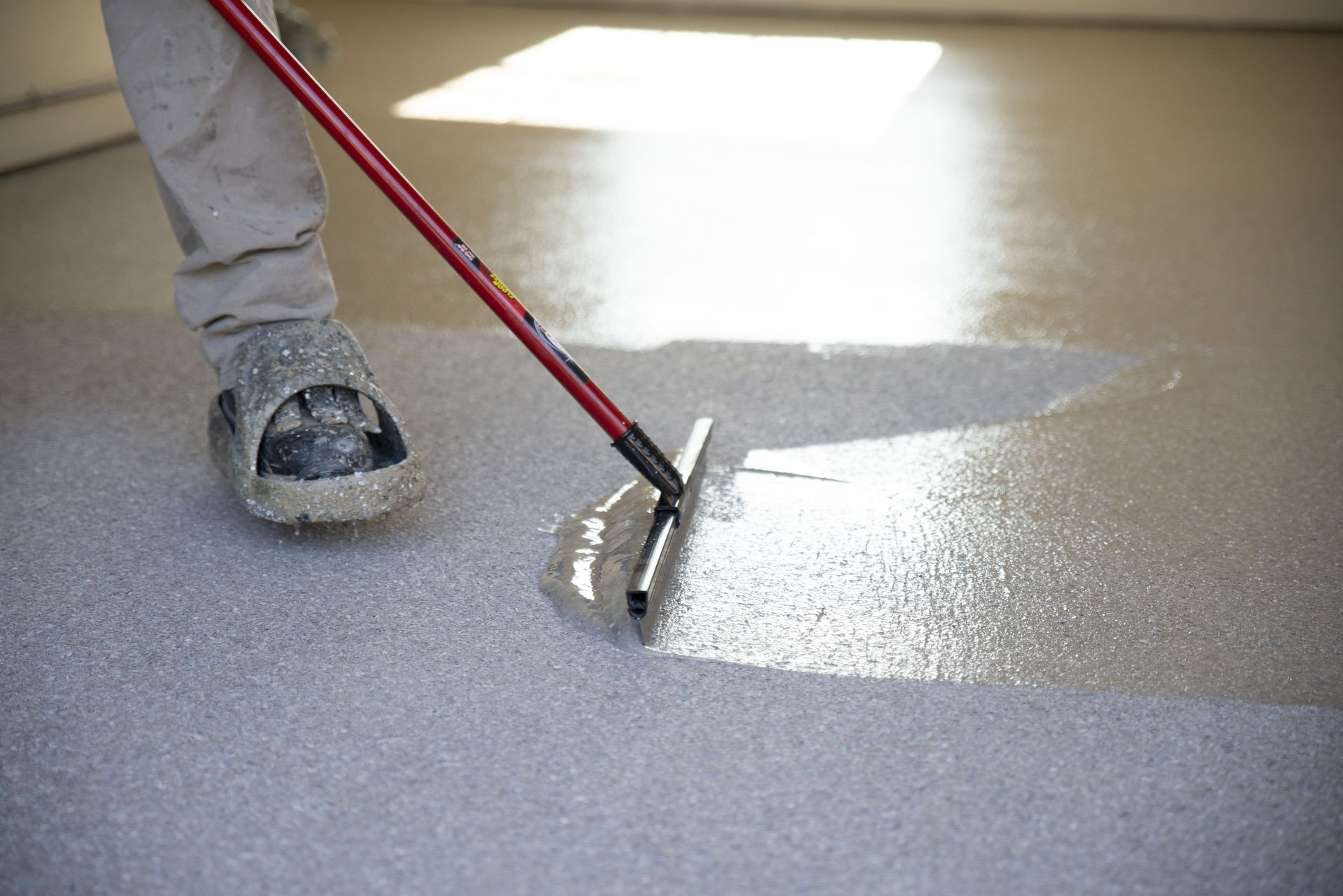
However, an often overlooked yet crucial aspect of safety lies right beneath our feet: the floor. Yes, you read that right. The flooring in our homes plays a significant role in preventing slips, trips, and falls, especially in areas prone to moisture or high foot traffic. That's where non-slip floor coatings come into play, offering a simple yet effective solution to enhance safety and peace of mind for you and your family. At Johns Creek Garage Floor, we understand the importance of keeping your home safe, which is why we're passionate about providing top-quality non-slip floor coatings for residential spaces. In this blog post, we'll delve into the benefits of non-slip floor coatings and how they can contribute to a safer environment in your home. Preventing Accidents: According to the National Safety Council, slips and falls are the leading cause of non-fatal injuries in the United States. In homes, slippery floors, especially in areas like bathrooms, kitchens, and entryways, can pose a significant risk, especially for young children, the elderly, and individuals with mobility issues. Non-slip floor coatings create traction, reducing the likelihood of accidents and providing a safer surface to walk on, even when wet. Enhancing Durability: Beyond safety, non-slip floor coatings also offer durability benefits. By adding an extra layer of protection to your existing flooring, whether it's concrete, tile, or wood, these coatings help shield against scratches, stains, and general wear and tear. This not only prolongs the life of your floors but also reduces the need for costly repairs or replacements in the future. Easy Maintenance: One of the key advantages of non-slip floor coatings is their low-maintenance nature. Unlike traditional flooring materials that may require frequent cleaning and upkeep to maintain their slip-resistant properties, coated floors are relatively easy to maintain. They can be simply cleaned with mild detergents and water, saving you time and effort in the long run. Versatility in Design: Contrary to popular belief, non-slip floor coatings don't have to sacrifice aesthetics for functionality. With advancements in coating technology, homeowners now have a wide range of design options to choose from. Whether you prefer a glossy finish or a more matte look, there are various coatings available to suit your aesthetic preferences while still providing the necessary traction for safety. Cost-Effective Solution: Investing in non-slip floor coatings is a cost-effective way to enhance safety in your home. Compared to other safety measures or renovations, such as installing handrails or restructuring the layout of your space, applying a non-slip coating is relatively affordable. Plus, the long-term benefits, such as reduced risk of injuries and property damage, far outweigh the initial investment. Environmental Friendliness: Many non-slip floor coatings are eco-friendly, making them a sustainable choice for environmentally conscious homeowners. These coatings are often low in volatile organic compounds (VOCs) and are safe for both indoor use and the environment. By opting for non-toxic coatings, you can create a safer and healthier living environment for your family. In conclusion, when it comes to ensuring the safety of your home, every detail matters—including your choice of flooring. Non-slip floor coatings offer a simple yet effective solution to prevent slips, trips, and falls, while also providing durability, ease of maintenance, design versatility, cost-effectiveness, and environmental friendliness. So why take chances with slippery floors? Invest in non-slip coatings today and enjoy a safer, more secure home for years to come. If you're interested in enhancing safety in your home with non-slip floor coatings, contact Johns Creek Garage Floor today for a consultation. Let us help you create a safer environment for you and your loved ones.
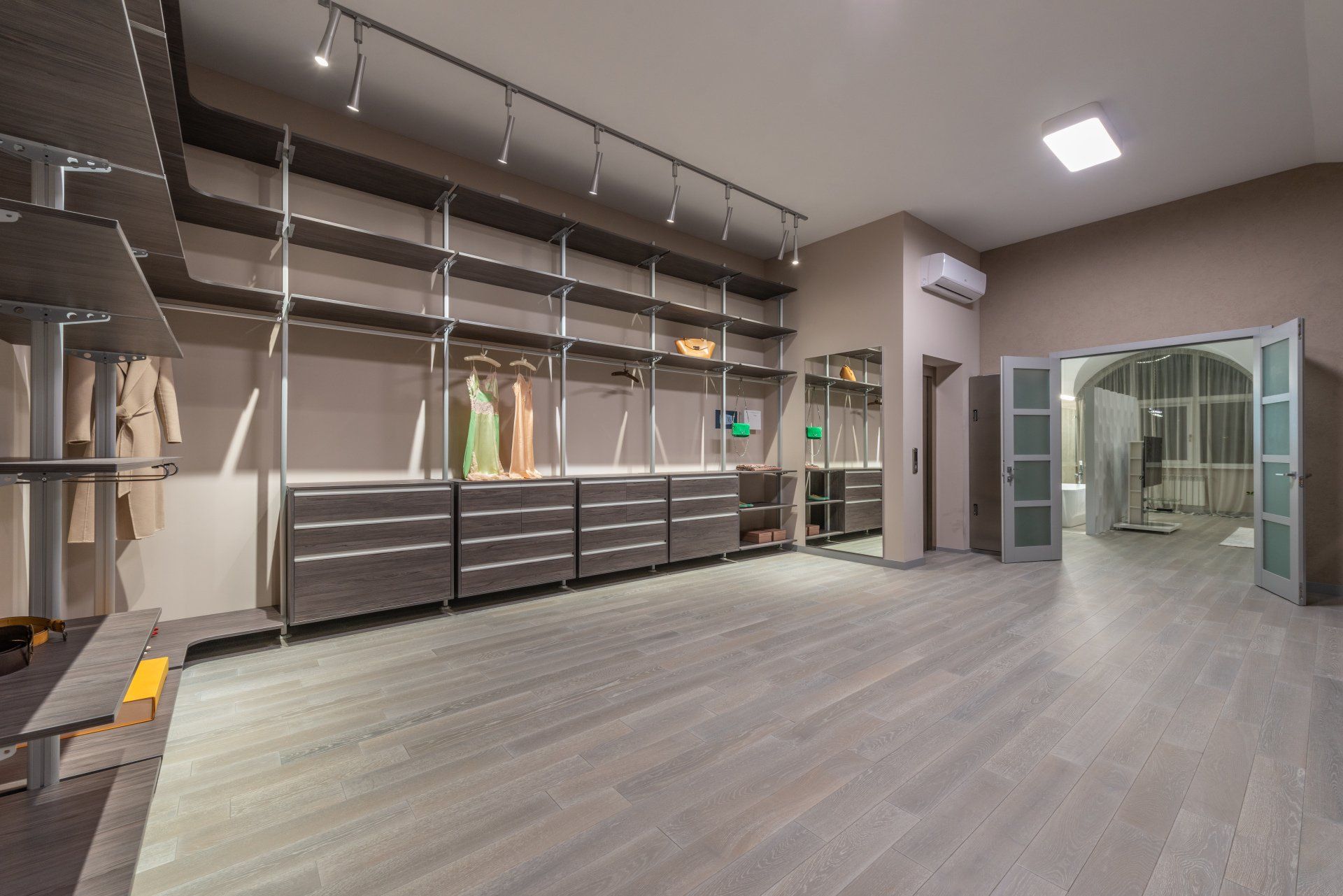
When it comes to protecting and enhancing garage floors, homeowners are presented with a plethora of coating options. But what sets polyaspartic coatings apart from traditional epoxy or polyurethane coatings? In this blog post, we'll delve into the science behind polyaspartic floor coatings and explore why they're considered superior for garage floor applications. Understanding Polyaspartic Chemistry Polyaspartic coatings belong to a class of polyurethane materials known as aliphatic polyureas. These coatings are formed through a chemical reaction between an aliphatic polyisocyanate and a polyaspartic ester. This unique chemical composition results in a highly cross-linked polymer structure that is incredibly strong, flexible, and resistant to UV exposure and chemical damage. Rapid Cure Time One of the most notable advantages of polyaspartic floor coatings is their rapid cure time. Unlike traditional epoxy coatings, which can take several days to cure fully, polyaspartic coatings cure within a matter of hours. This rapid cure time allows for faster installation and turnaround, minimizing downtime and inconvenience for homeowners. Additionally, the quick cure time means that polyaspartic coatings can be applied in a wider range of temperatures and humidity levels, making them ideal for use in various environmental conditions. Exceptional Durability Polyaspartic floor coatings are renowned for their exceptional durability and resistance to wear and tear. The cross-linked polymer structure of polyaspartic coatings creates a tough, abrasion-resistant surface that can withstand heavy foot traffic, vehicle traffic, and impact from dropped tools or equipment. Additionally, polyaspartic coatings are highly resistant to chemicals, including gasoline, oil, grease, and household cleaners, making them an ideal choice for garage floors where exposure to these substances is common. UV Stability UV exposure can cause traditional epoxy coatings to yellow, fade, or chalk over time, detracting from the appearance of the garage floor. However, polyaspartic coatings are inherently UV stable, meaning they maintain their color and clarity even when exposed to sunlight for extended periods. This UV stability ensures that polyaspartic-coated garage floors retain their vibrant appearance and aesthetic appeal year after year, without the need for frequent recoating or maintenance. Seamless Application Polyaspartic floor coatings offer a seamless, high-gloss finish that enhances the appearance of the garage floor while providing a smooth and easy-to-clean surface. Unlike epoxy coatings, which can require multiple coats and extensive preparation, polyaspartic coatings can be applied in a single coat with minimal surface preparation. This seamless application process results in a uniform and attractive finish that adds value to the home and enhances the overall aesthetic of the garage. The science behind polyaspartic floor coatings makes them a superior choice for homeowners looking to protect and enhance their garage floors. With their rapid cure time, exceptional durability, UV stability, and seamless application, polyaspartic coatings offer numerous advantages over traditional epoxy or polyurethane coatings. At Johns Creek Garage Floor, we specialize in installing high-quality polyaspartic floor coatings that provide long-lasting protection and beauty for your garage floor. Contact us today to learn more about how polyaspartic coatings can transform your garage into a functional and stylish space.

However, the process isn't without its challenges, and there are several common mistakes that DIY enthusiasts and even professionals can make when applying garage floor coatings. In this blog post, we'll highlight some of these pitfalls and provide tips on how to avoid them for a successful garage floor coating project. 1. Skipping Surface Preparation One of the most crucial steps in the garage floor coating process is proper surface preparation. Neglecting this step can result in poor adhesion and premature coating failure. Before applying any coating, it's essential to thoroughly clean the surface of the garage floor, removing dirt, oil, grease, and any existing coatings. Use a degreaser or concrete cleaner along with a stiff-bristled brush or pressure washer to ensure the surface is clean and free of contaminants. Additionally, it's essential to repair any cracks, pits, or imperfections in the concrete before applying the coating. Failure to address these issues can lead to unevenness in the finished surface and compromise the integrity of the coating. 2. Inadequate Ventilation Many garage floor coatings, such as epoxy and polyurethane, emit fumes during the application and curing process. Proper ventilation is essential to ensure the safety of the applicator and prevent the buildup of harmful vapors. Before starting the coating application, ensure that the garage is well-ventilated by opening windows and doors or using exhaust fans. If working in an enclosed space, consider wearing a respirator to protect against inhaling fumes. It's also crucial to follow the manufacturer's recommendations regarding ventilation and safety precautions to minimize health risks. 3. Incorrect Mixing Ratio For two-part epoxy and polyurethane coatings, achieving the correct mixing ratio is critical for proper curing and performance. Deviating from the manufacturer's recommended ratio can result in incomplete curing, soft spots, or uneven finish. Before mixing the components, carefully read and follow the instructions provided by the manufacturer, and use precise measuring tools to ensure accuracy. Avoid eyeballing the mixing ratio or estimating, as even small deviations can impact the quality of the finished coating. Take your time and follow the instructions meticulously to achieve the best results. 4. Rushing the Application Process Garage floor coating applications require careful planning and execution, and rushing through the process can lead to mistakes and subpar results. Take the time to familiarize yourself with the application techniques recommended by the manufacturer and follow them diligently. Avoid applying the coating in extreme temperatures or humid conditions, as this can affect curing times and adhesion. Allow adequate time for each coat to dry or cure before proceeding to the next step, and avoid walking or driving on the surface until it is fully cured. 5. Neglecting Recoating and Maintenance Once the garage floor coating is applied, proper maintenance is essential to preserve its appearance and performance. Neglecting to recoat or maintain the surface can result in premature wear and deterioration. Regularly inspect the garage floor for signs of damage or wear, and recoat as needed to maintain protection and aesthetics. Additionally, follow the manufacturer's recommendations for cleaning and maintenance to prolong the life of the coating and keep the surface looking its best. By avoiding these common mistakes and following best practices for garage floor coating application, you can achieve professional-quality results and enjoy a durable, attractive surface in your garage for years to come. Take the time to prepare the surface properly, follow the manufacturer's instructions carefully, and prioritize safety and ventilation throughout the process. With attention to detail and proper maintenance, your garage floor coating will provide long-lasting protection and enhance the overall functionality and appearance of your space.